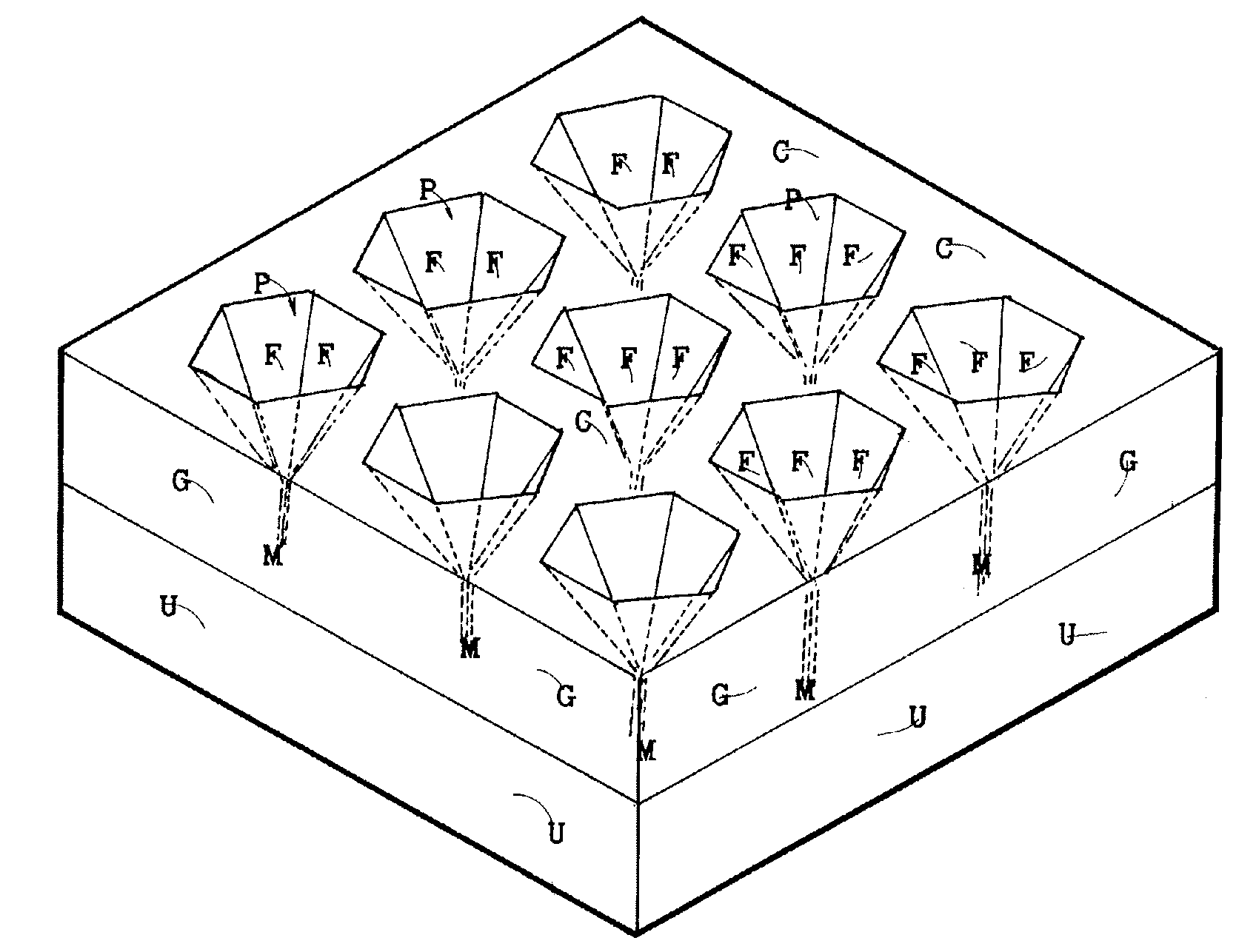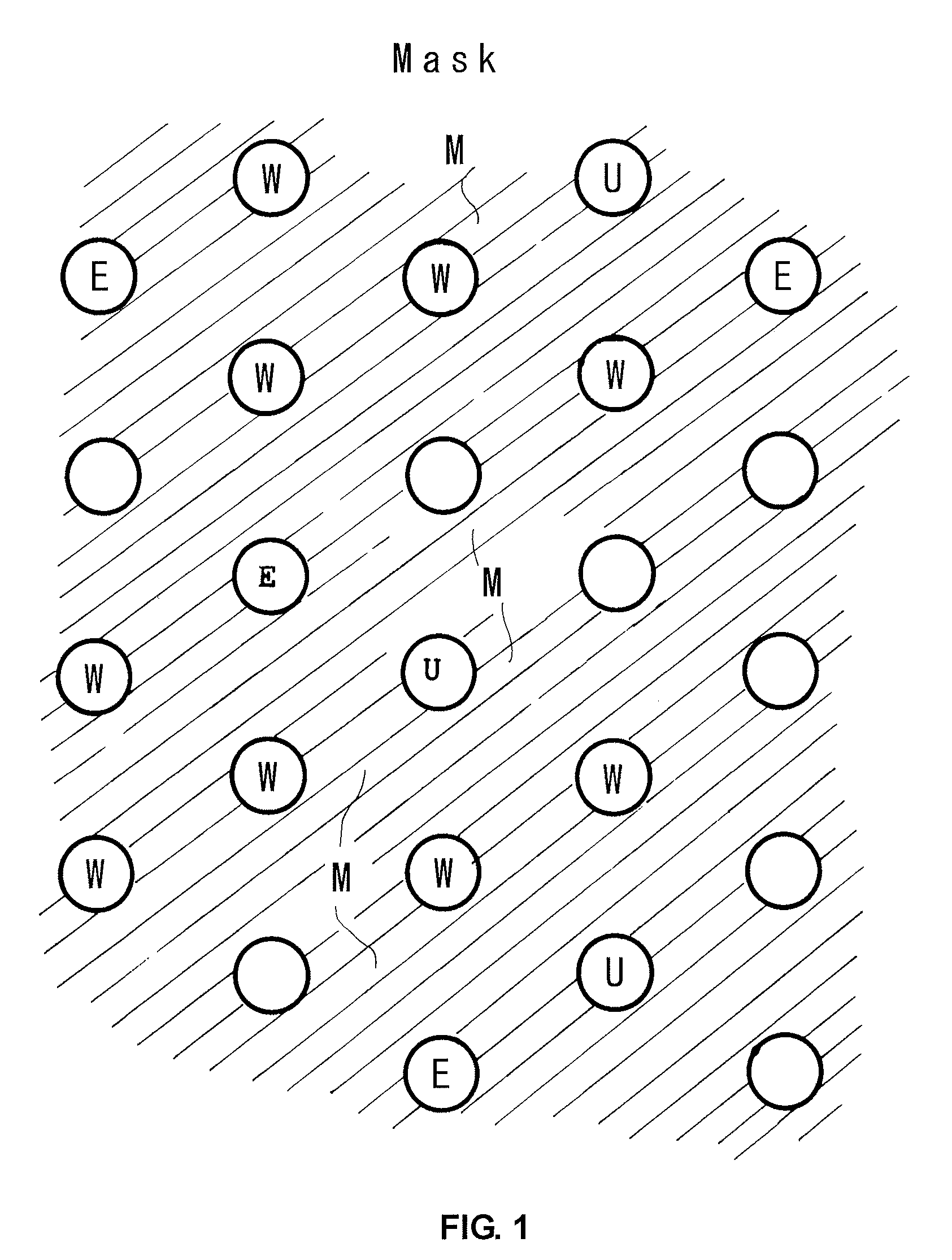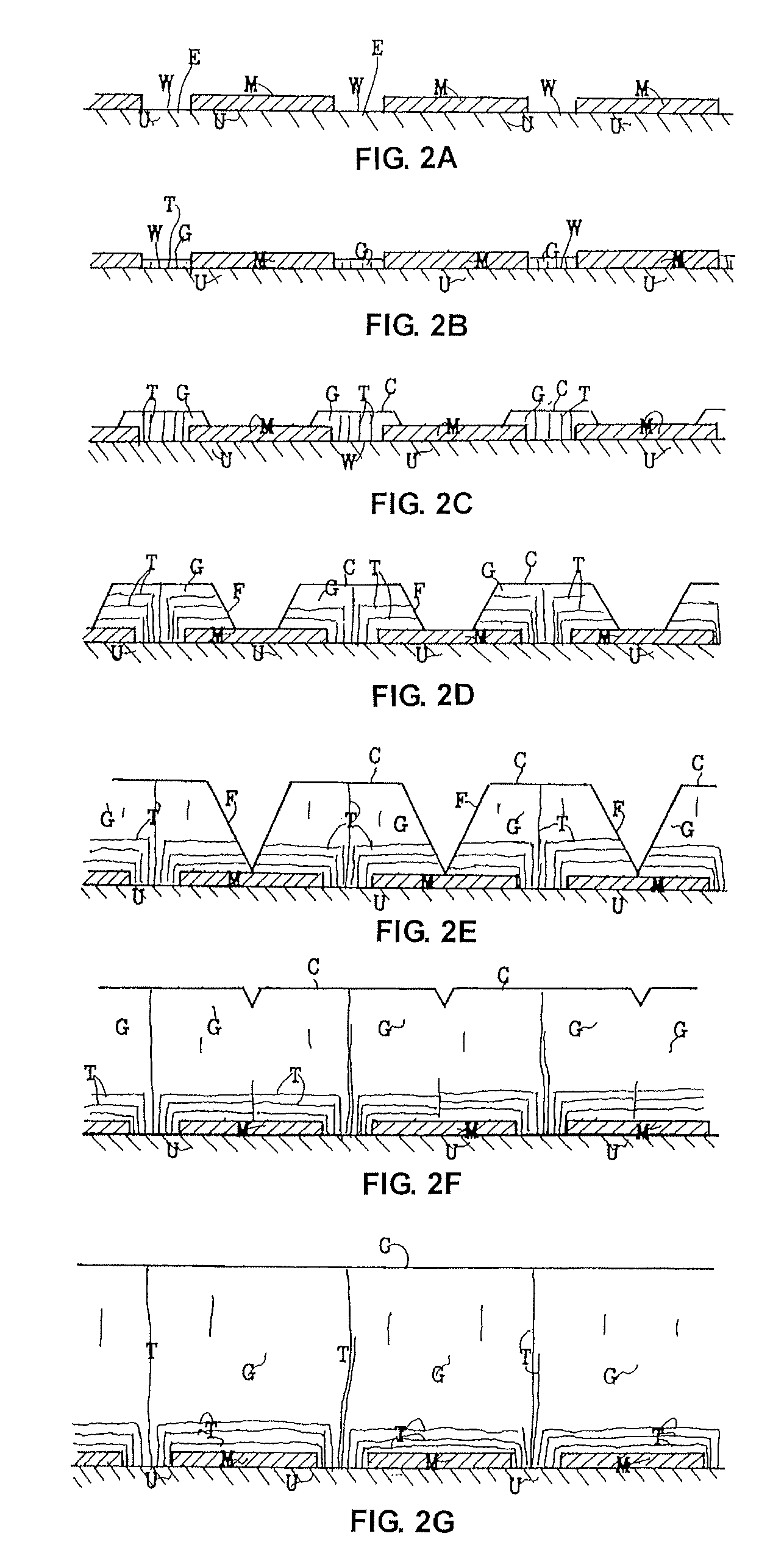Conductive nitride semiconductor substrate and method for producing the same
a technology of conductive nitride and semiconductor substrate, which is applied in the direction of single crystal growth, polycrystalline material growth, chemistry apparatus and processes, etc., can solve the problems of inability to form to a thickness of 70 m or more, inapplicability of /sub>gacl of 1 kpa, and inability to achieve partial formation of gacl, etc., to achieve complementarity and uniformity reduce dislocation density density ratio
- Summary
- Abstract
- Description
- Claims
- Application Information
AI Technical Summary
Benefits of technology
Problems solved by technology
Method used
Image
Examples
examples
[0205]Dot masks or stripe masks were formed on GaAs substrates having (111) Ga-plane serving as underlying substrates. The masks were formed of SiO2 and had a thickness of 60 to 200 nm. The ranges of dimensions (s, w, and p) of the masks were 10 μm≦s≦100 μm and 250 μm≦w≦10,000 μm. The dimensions and shapes of the masks of the individual samples will be described later. A GaN film was then grown on the substrates by HVPE. Specifically, a buffer layer was initially formed, and a thick epitaxial layer was then formed thereon. A total of 45 different types of samples were prepared. The growth conditions for the buffer layer were as follows:
[0206]Substrate temperature: 500° C. to 550° C.
[0207]GaCl partial pressure PGaCl: 80 Pa (0.0008 atm)
[0208]NH3 partial pressure PNH3: 16 kPa (0.16 atm)
[0209]Thickness of buffer layer: 50 nm
[0210]The buffer layer was grown at a V / III ratio b of 200. Although the growth temperature and the V / III ratio b are important in the present invention, they are im...
PUM
| Property | Measurement | Unit |
|---|---|---|
| diameter | aaaaa | aaaaa |
| diameter | aaaaa | aaaaa |
| resistivity | aaaaa | aaaaa |
Abstract
Description
Claims
Application Information
 Login to View More
Login to View More - R&D
- Intellectual Property
- Life Sciences
- Materials
- Tech Scout
- Unparalleled Data Quality
- Higher Quality Content
- 60% Fewer Hallucinations
Browse by: Latest US Patents, China's latest patents, Technical Efficacy Thesaurus, Application Domain, Technology Topic, Popular Technical Reports.
© 2025 PatSnap. All rights reserved.Legal|Privacy policy|Modern Slavery Act Transparency Statement|Sitemap|About US| Contact US: help@patsnap.com



